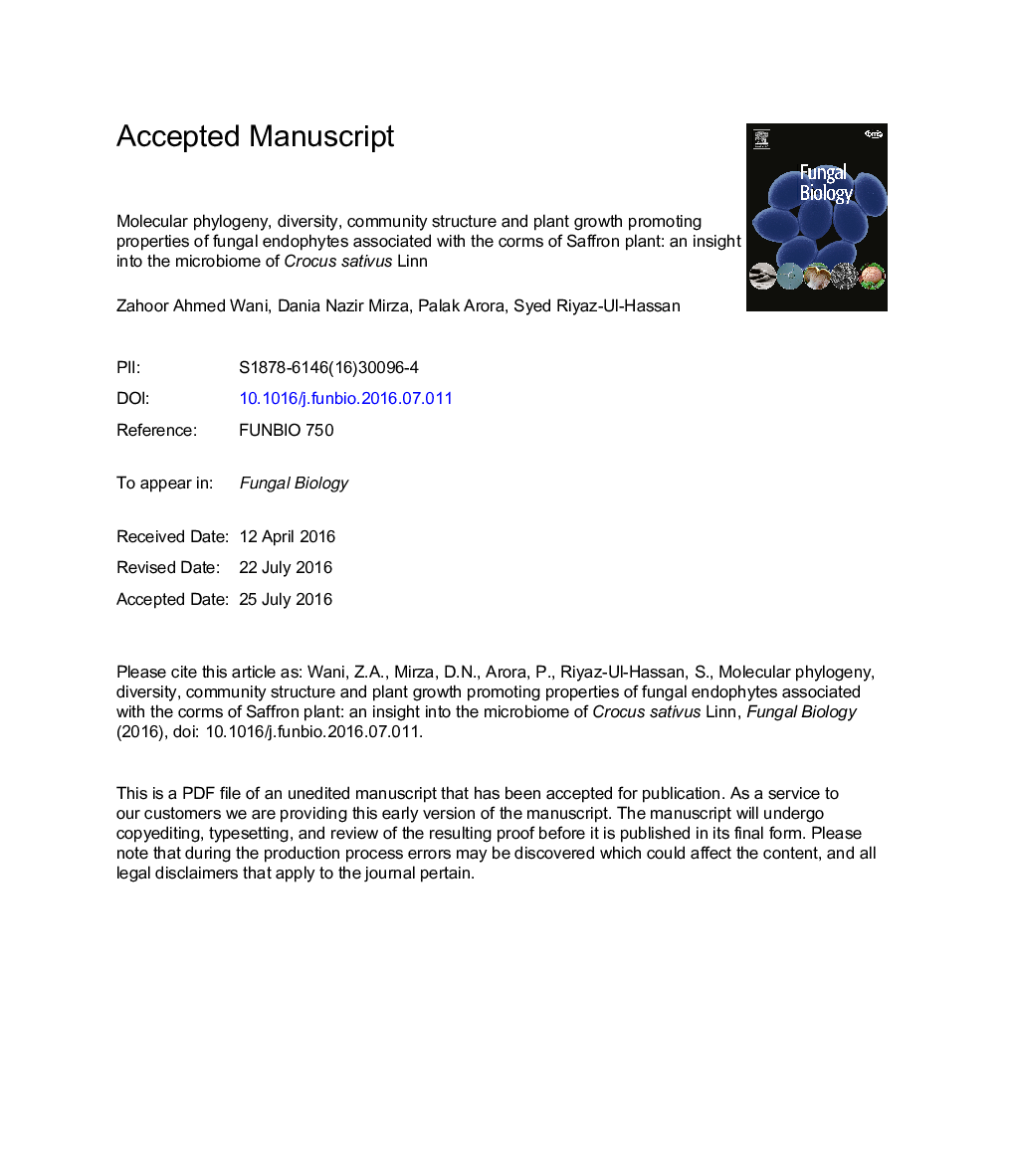| Article ID | Journal | Published Year | Pages | File Type |
|---|---|---|---|---|
| 8842810 | Fungal Biology | 2016 | 36 Pages |
Abstract
A total of 294 fungal endophytes were isolated from the corms of Crocus sativus at two stages of crocus life cycle collected from 14 different saffron growing sites in Jammu and Kashmir (J & K) State, India. Molecular phylogeny assigned them into 36 distinct internal transcribed spacer (ITS) genotypes which spread over 19 genera. The diversity of endophytes was higher at the dormant than at the vegetative stage. The Saffron microbiome was dominated by Phialophora mustea and Cadophora malorum, both are dark septate endophytes (DSEs). Some endophytes were found to possess antimicrobial properties that could be helpful for the host in evading the pathogens. These endophytes generally produced significant quantities of indole acetic acid (IAA) as well. However, thirteen of the endophytic taxa were found to cause corm rot in the host with different levels of severity under in vitro as well as in vivo conditions. This is the first report of community structure and biological properties of fungal endophytes associated with C. sativus, which may eventually help us to develop agro-technologies, based on plant-endophyte interactions for sustainable cultivation of saffron. The endophytes preserved ex situ, in this study, may also yield bioactive natural products for pharmacological and industrial applications.
Related Topics
Life Sciences
Agricultural and Biological Sciences
Agricultural and Biological Sciences (General)
Authors
Zahoor Ahmed Wani, Dania Nazir Mirza, Palak Arora, Syed Riyaz-Ul-Hassan,
